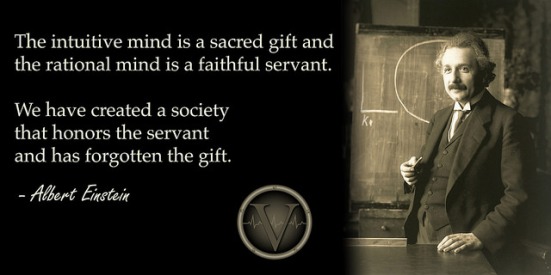
A new, ‘unconventional’ framework for business strategy is emerging. One that various high-performance companies have used to succeed at a time when most businesses have struggled to find growth. This post outlines a tested approach for strategy development aligned to this framework that can be adapted by any organisation with relative ease.
Business strategy has been disrupted
There has been a quiet revolution in the thinking about business strategy over recent years. One that many companies have yet to grasp; partly due to an increased focus on short-term initiatives over the same period in response to the pressures of low-growth markets.
The popular concepts and models of strategic management – such as the experience curve, competitive advantage, mission statements, operational excellence, continuous improvement, portfolio analysis, value propositions, customer intimacy and so on – are still relevant in many cases.
But a growing number of studies have found that high-performance businesses are looking beyond and above these to set direction and priorities. The key pillars for these businesses are instead things like purpose, vision, identity and values.
There are several reasons for this shift. Very briefly, here are two.
First, digital technologies and communications have eroded the underlying advantages connected to traditional strategic platforms. For instance, the ability to easily access outsourced production capabilities means the scale and cost advantages from experience are less significant. Differentiation based on actual product differences is unusual and – when achieved – is usually fleeting, with competitors able to match or offset innovations in very short periods of time. Customer relationships have become more fragile with competitors and new entrants able to build market presence and consumer connections rapidly and relatively cheaply.
Second, triggered by the GFC, developed markets have moved from decades of conspicuous consumption to a new era of considered consumption. As repeatedly observed by leading trend monitors, people are looking for more from the products and services they use and from the companies behind them. Increasingly consumers are buying ‘meaning’ rather than things.
Brand strategy now leads business strategy

While concepts like identity and values may be novel for business strategy, they have long been fundamental to brand strategy. Which supports the view of Lee Clow, chairman of international advertising network TBWA Worldwide, that “Managing brands is going to be more and more about trying to manage everything that your company does”.
To understand this, businesses need to appreciate that brand strategy has evolved from being primarily a communications platform to – in forward-thinking companies – a central driver of direction, decision-making and behaviour.
This is reflected in various contemporary views of ‘brand’, such as UK brand strategist Mark Thomson’s assertion that: “Brands are the stories that unite us all in a common purpose within an enterprise, and connect us with the people we serve on the outside. These brand stories give meaning to who we are and what we do”.
Jim Stengel, the former global marketing officer of Proctor & Gamble and author of Grow: How Ideals Power Profit and Growth at the World’s Greatest Companies, has similarly stated: “Any brand is simply the collective intent of the people behind it. To everyone your business touches, from employees to consumers, the brand defines who you are and what you stand for as a business. If you want great business results, you and your brand have to stand for something compelling”.
Rather than being a story that is simply layered onto what a company offers, leading-edge brand strategy now guides fundamental business choices and actions.
This is by no means entirely new. Companies with strong brands have long made them essential to the life of the business. The Economist’s Brands and Branding, published over a decade ago in 2003, detailed eight principles and characteristics of great brands. Amongst these are:
- A resolute core purpose and supporting values that remain unchanged by business strategy and tactics.
- Use as a central organising principle – the brand is a key factor in all management decision making.
- Alignment of internal and external commitment to the brand.
However, it is only over the past few years that these types of principles have entered the mainstream of business thinking.
The power of brand story-telling and story-doing

While conceiving of business strategy as a ‘story’ may not sit comfortably with many financial and analytically based senior managers, in many respects good strategy has always told a story. Stories about where a business wants to compete and why, and how it intends to succeed.
It’s just that the starting points of these are goals and objectives rather ambition and vision. The building blocks are products, resources and capabilities rather than the desired role of the business in its customers’ lives. The language is matter-of-fact rather than inspirational.
Importantly, they have beginnings and ends dictated by the time-frame of a business’ planning horizon, be it one, three or five years. Brand-based strategies are actually narratives without defined end points. This is not at all to say they don’t contain milestones to achieve. But that they recognise how the strategy is actually executed is dynamically shaped by the participants of the story (i.e. customers, employees, partners and suppliers).
For instance, Apple’s much cited narrative can be summed up along the lines of how technology and intuitive design can enable people to achieve more. The hero of this is not Apple but its customers. Its products simply serve as the catalysts to “Think Different”.
Companies that are managed by such narratives have been termed by US strategy and innovation firm co:collective as ‘storydoing’ companies. These businesses use their core story to guide and structure “activities throughout the company: new product development, recruiting, compensation, partnerships, as well as any communication that they create”.
To support the contention that this approach delivers superior business performance, the firm evaluated 42 publically-listed US companies across seven sectors including Retail, Food & Beverage and Consumer Electronics. In each sector, a StoryDoing company was compared on range of KPIs against its main non-storydoing competitors. (For instance, American Express was evaluated against such players as Visa, Mastercard and Fidelity). These competitors also had well defined stories, but were seen to use them primarily to guide advertising and other communications, and so were classified as storytellers rather than storydoers.
Storydoing companies were found to outperform non-storydoers on every measure including annualised revenue growth rate, efficiency of investment in paid media, and annualised growth in share price.
To provide a better understanding of this new perspective, here are brief summaries of two recent studies into how various pace-setting companies go about strategy – the Collective Ambition Model and the Unconventional Acts Approach.
The Collective Ambition Model

Between 2008 and 2011, researchers from the Kenan-Flagler Business School at the University of North Carolina studied 45 companies from around the world, and across various industries, that defied the GFC recession to actually grow stronger during this period.
Based on interviews and workshops with “dozens of CEOs, senior executives, and mid-level managers”, they developed a model for success they termed ‘collective ambition’.
The elements of this model, as described in the Harvard Business Review article, “The Power of Collective Ambition”, are as follow.
Purpose: a clear and meaningful articulation of your company’s reason for being.
Vision: the position or status your company aspires to achieve within a reasonable time frame.
Targets and milestones: the metrics to be used to assess progress toward your vision.
Strategic and operational priorities: the actions you do or do not take in pursuit of your vision.
Brand promise: the commitments you make to stakeholders (customers, communities, investors, employees, regulators, and partners) concerning the experience the company will provide.
Core values: the guiding principles that dictate what you stand for as an organization, in good times and bad.
Leader behaviours: how leaders act on a daily basis as they seek to implement the company’s vision and strategic priorities, strive to fulfil the brand promise, and live up to the values.
The Unconventional Acts Approach
In the recently published Strategy That Works: How Winning Companies Close the Strategy-to-Execution Gap, two of the leaders of Strategy& – PwC’s global strategy consulting business – outline their study of “a carefully selected group of extraordinary enterprises …known for…consistently doing things that other businesses couldn’t do”.
What they’ve found is that at some point, each of these companies “moved away from the conventional wisdom of mainstream business practice”. With each in its own way then following a similar path of five unconventional acts; a path that represents “an approach to strategy that makes it easier to consistently succeed”. These five acts, as outlined in the strategy+business article “Creating a Strategy That Works”, are as follow.
Commitment to an identity: Be clear minded about what your company stands for, who you are and what you do. Then align your distinctive capabilities to this and ensure your chosen all your chosen products and services makes use of those capabilities. (Rather than the conventional wisdom of focusing on growth and likely chasing multiple market opportunities where you have no right to win).
Translate the strategic into the everyday: Focus on building and connecting the few cross-functional capabilities that deliver your strategic intent, and devote yourself to making them excellent. (Rather than pursuing functional excellence in everything, but mastering nothing).
Put your culture to work: Celebrate and leverage your cultural strengths. Make sure your strategic focus – where the company is going – is clear to all employees and they know where they stand in regards to it. (Rather than regarding culture as an enemy of change, and falling into the habit of organizing and reorganizing in vain attempt to change behaviours and create success by restructuring alone).
Cut costs to grow stronger: Treat every cost as a potential strategic investment and cost management as a way to make critical choices about identity and direction. Focus on spending more than competitors do on what matters to most to you and as little as possible on everything else. (Rather than go lean and cutting costs across the board – starving key capabilities while overinvesting in non-critical businesses and functions).
Shape your future: Reimagine your capabilities beyond your current business scope, create demand by serving the most fundamental needs and wants of your customers, and realign your industry on your own terms. (Rather than being ‘agile and resilient’ and constantly reacting to market changes in the misguided conviction that if you listen hard and act fast, you will survive).
Challenges to developing strategy that works

While these models, and other like them, are relatively new, in general the individual concepts they incorporate are not. For instance, the best-sellers Built to Last (1994) and subsequent Good to Great (2001), made ‘vision’ officially part of the business lexicon some two decades ago.
As a result, many companies have vision statements. However, as has been observed by those who specialise in them, the majority of these statements are ineffective in a variety of ways. Some are simply not inspiring enough to energise people to do anything. Others are so misaligned with the realities of their organisations that they’re met with scepticism and consequently ignored. Many are so complex that they’re simply not understood by those tasked with striving for them.
This short-coming illustrates the major challenge for companies looking to apply this new mode of thinking to the forefront of business strategy. Essentially, while concepts like vision, purpose, identity, brand promise and values are the language of brand strategy, they are not part of the natural vocabulary of many business executives.
The problem is well summed up by the former Chairman of Diageo, Sir John Bull. A long-time advocate that brand strategy should be a board level concern, Bull has observed “the process of building brands is more art than science, demands flair and inspiration, qualities which are not commonly found in the business community and, when they are, win scant respect from the majority of earnest business executives who, unable to comprehend, instinctively mistrust”.
In short, the skill set of the typical executive does not easily lend itself to the conceptual thinking required to develop the approach to strategy endorsed by these new models.
Apart from somehow finding a good degree of “flair and inspiration”, there are two other barriers for companies to overcome.
One is getting this type of thinking to work with existing business planning practices. Most of the components involved rightly focus on high level strategic direction. But to make a difference they need to be injected into functional and operational plans and budgets. For most businesses, this would ostensibly seem to require significant effort and investment to adapt current systems and processes.
The other barrier is that there isn’t a single ‘how to’ manual for implementing this approach. While there is clear evidence that a range of exceptional businesses have employed similar strategic components, how they went about this appears to have varied with their specific circumstances.
This introduces the uninviting prospect of cobbling together techniques for applying these concepts from different sources, and then adopting them with trial and error. A task that can be likened to trying to build a plane while flying it.
How to actually develop strategy that works
In leading client brand development projects over the past few years, we have encountered this shift in strategic intent in various companies in various ways. The common denominator amongst them has been the desire to articulate their ‘story’ to a degree that allows them to guide their entire business with it. In particular the areas that most impact the customer experience.
In response to this, we have evolved an approach to strategy development that mirrors the Collective Ambition / Unconventional Acts type of models.
The process also recognises, and deals with, the challenges and barriers outlined above, in that it:
- Can be adopted to any size or type of organisation.
- Is relatively achievable. Typically taking just two to four months and only requiring the equivalent of a few days of actual management involvement.
- Complements existing planning processes rather than attempting to replace them.
- Educates key stakeholders during the course of implementing it.
Following are top-line descriptions of the main components of this approach.
- Embracing Strategic Intuition

The first consideration is not a component per se, but a set of principles that inform the approach overall.
These principles are built on the pioneering work of Columbia University’s William Duggan into ‘Strategic Intuition’, which identifies the common factors that have driven breakthrough thinking in multiple fields ranging from military planning to modern art.
Some of these principles are:
- Selectively involving people with diverse experience – including those who are not usually part of strategy discussions such as front-line and support staff, and junior employees.
- Free thinking – distancing things from the restrictions of previous ideas and expectations.
- Novel combinations – creating opportunities to generate a wide range of options using diverse inputs.
These are applied throughout the strategy development process via intensive workshops, focused breakout groups, brainstorming techniques and lateral thinking exercises.
- Visioneering

The initial step is to develop a robust Vision. The exact elements of this varies by organisation, but commonly include:
- Purpose – that sets out the fundamental role the organisation plays or wants to play in “the world”. (As distinct from a Mission statement that describes what it does).
- Picture of the future – an imaginative and compelling view of what the organisation could aspire to achieve in the long-term.
- Core Values – the internal principles and beliefs that guide employee behaviour and the desired culture.
These are generated through a one-day Visioneering workshop with the senior management team. Other senior stakeholders such as board members and long-serving employees may also be involved.
For this phase in particular, pre-work is essential to success, with each workshop participant required to undertake the equivalent of around a half-day’s preparation. The task for the workshop itself is to synthesise and focus these inputs to generate an inspiring Vision for the organisation to strive for.
- Brand Blueprinting

The second phase is to build an in-depth view of the relationship the organisation wants to have with its customers or constituents. This is captured in a Brand Blueprint that clearly and succinctly defines what the business promises in all its aspects – both in terms of what it currently delivers and what it wants to deliver moving forward.
The elements of this range from the key rational features of the organisation’s product and/or service offers (or ‘value proposition’) to emotional and social benefits, its customer-facing values, projected personality, and so on.
These various elements are explored and extracted through one or more brand workshops involving selected stakeholders from different parts and levels of the organisation. Various techniques are used to challenge and stretch considerations including – if appropriate – disruptive thinking tools.
Prior to the workshop, a review of existing plans, research and competitors is conducted to develop options and stimulus to feed into workshop pre-work and discussions. (If required, consumer research can be commissioned to feed into the workshop or assess outputs).
The outcome of this phase is literally a one-page view of what the business needs to deliver to its customers to succeed.
Side note: As outlined earlier, brand strategy and business strategy have merged. So we use the term ‘brand’ in this context. But language is important. For some companies that are still on the journey towards this new understanding of brand, different terminology may be called for. For instance, one progressive CEO we’ve worked with has found it more useful to present the Brand Blueprint as the company’s ‘Business Strategy Framework’.
- Initiative Mapping

The final phase is the generation of the strategic initiatives needed to take the business to the next level.
This is achieved through a one to two day workshop with the involvement of all parts of the business. As the majority of the work is undertaken in simultaneously conducted breakout groups, up to 20 to 30 participants can take part; ideally with both senior and middle management involvement.
The workshop is broken up into several sessions, each concentrated on different aspects of the Vision and Brand Blueprint. In many cases key trends and factors impacting the business will provide a third layer of inputs. These are either extracted from the organisation’s existing planning process or a separate situation analysis session may be undertaken to identify them.
A whole of business view is maintained throughout, with participants both invited and challenged to focus on the implications for each part of the business mix, from customer facing to support functions (as per the above example diagram). This allows for both primary driving strategies and supporting enabling strategies to be considered.
Priority is given to attaining breadth rather than depth of ideas. By the end of a workshop it is likely some 60 to 100 potential initiatives will have been generated. An initial filter is then applied to arrive at a long-list of around 20 to 30 initiatives to examine further.
Following the workshop these outputs are synthesised and refined. A working session is then held with the core management group to critically evaluate the adjusted long-list so as to determine the short-list initiatives to actually be pursued. (The exact number of initiatives will depend on the size of the organisation and the resources it has available). Finally, the group will make any further modifications to these that may be necessary.
Each initiative may then be evaluated with the organisation’s standard business case criteria and fed directly into its normal planning processes.
Implementing the strategy
At the completion of these phases, an organisation has the essential foundations for the type of strategic direction commended by the new models of strategy outlined previously.
The Vision, Brand Blueprint and portfolio of Strategic Initiatives are then used as springboards for operational planning – and collectively serve as a guide for day-to-day decision making – across the enterprise.
Importantly, the engagement of stakeholders responsible for implementing the direction in developing it, instills widespread determination to actually execute the strategy.
This fulfils a further principle of Strategic Intuition, being ‘Resolution’ to pursue a new course of action. In this context, resolution is also about the flexibility to adjust initiatives and generate alternatives in response to emerging barriers and opportunities. Adjustments that are kept ‘on strategy’ through a shared commitment to, and understanding of, the Vision and Blueprint.
Towards brand-lead business strategy
To sum up the main points of this paper:
- Business strategy has been disrupted, with the conventional concepts and models for strategy development becoming less effective.
- In response, forward-thinking organisations have successfully based their strategies on such pillars as purpose, vision, identity and values.
- Given the centrality of these types of concepts in brand strategy, it can be seen that a new brand-lead framework for the creation of business strategy is evolving.
- To leverage this, organisations can complement their existing strategy processes with a collaborative, team-based approach to strategy development comprised of three core phases: Visioneering, Brand Blueprinting and Initiative Mapping.
As this type of thinking becomes mainstream, expect more businesses to mirror the view of leading UK telecommunications firm, O2, that “the brand runs the company, rather than the company running the brand”.
If you’re interested in finding out more or discussing how the outlined approach could benefit your organisation, please contact Glenn Myatt on 0419 768867 or via glenn.myatt@brandtruth.com.au.
Image Credits: Bill Hails, thrig, David Spinks, IBM, HBR, Seattle Municipal Archives, Vincent Brown, Celestine Chua, Disney, Will Scullin
:Thinkshots | Thinkshot posts are observations and ideas relating to current issues and trends impacting the future of brands, marketing and marketing communications.
Our blog aims to provide thoughts and insights into brand strategy, brand management and brand building for navigating a changing world.
If you found this post of interest please Like our Facebook page, Sign In to Follow us on LinkedIn or sign-up to the ‘Follow Blog via Email’ option (at the top right of this page) to stay up to date with future posts.